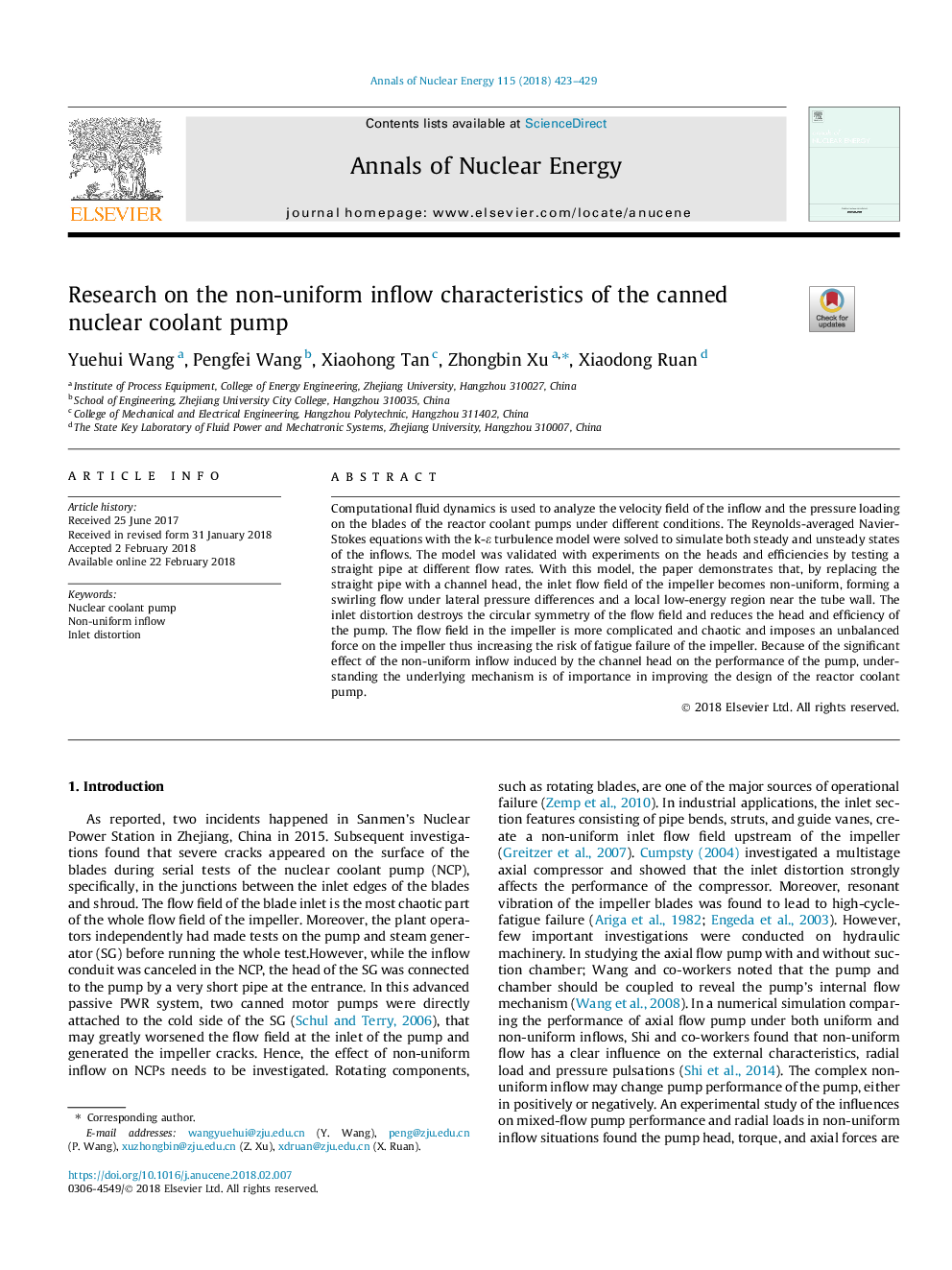| Article ID | Journal | Published Year | Pages | File Type |
|---|---|---|---|---|
| 8067106 | Annals of Nuclear Energy | 2018 | 7 Pages |
Abstract
Computational fluid dynamics is used to analyze the velocity field of the inflow and the pressure loading on the blades of the reactor coolant pumps under different conditions. The Reynolds-averaged Navier-Stokes equations with the k-ε turbulence model were solved to simulate both steady and unsteady states of the inflows. The model was validated with experiments on the heads and efficiencies by testing a straight pipe at different flow rates. With this model, the paper demonstrates that, by replacing the straight pipe with a channel head, the inlet flow field of the impeller becomes non-uniform, forming a swirling flow under lateral pressure differences and a local low-energy region near the tube wall. The inlet distortion destroys the circular symmetry of the flow field and reduces the head and efficiency of the pump. The flow field in the impeller is more complicated and chaotic and imposes an unbalanced force on the impeller thus increasing the risk of fatigue failure of the impeller. Because of the significant effect of the non-uniform inflow induced by the channel head on the performance of the pump, understanding the underlying mechanism is of importance in improving the design of the reactor coolant pump.
Keywords
Related Topics
Physical Sciences and Engineering
Energy
Energy Engineering and Power Technology
Authors
Yuehui Wang, Pengfei Wang, Xiaohong Tan, Zhongbin Xu, Xiaodong Ruan,
